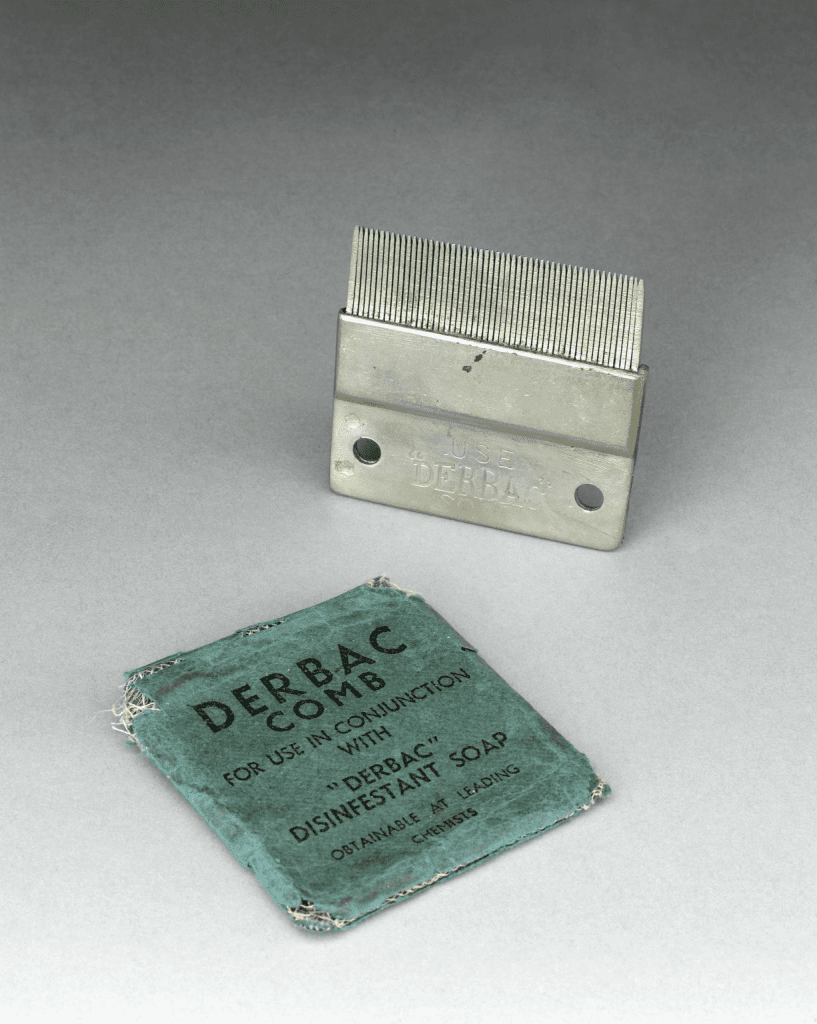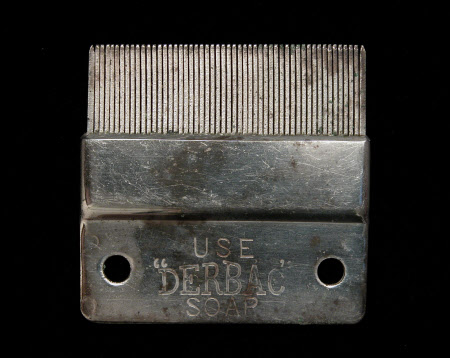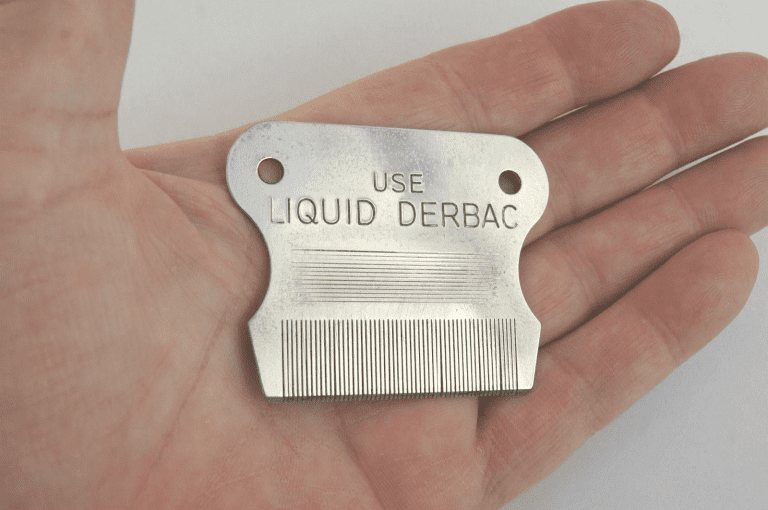Head lice have been an unwelcome companion of humanity for centuries, and dealing with them has always been a challenge. Among the innovative tools of the 20th century, the Derbac soap nit comb stands out as an enduring symbol of practicality and ingenuity. Manufactured in England during the 1930s and 1940s, this metal comb became a staple in households and schools for combating lice infestations. Encased in a modest paper envelope with clear instructions, the Derbac comb was more than a tool—it was a lifeline in an era before modern chemical treatments.
Let’s dive into the history, design, and impact of this iconic hygiene product.
The Historical Significance of the Derbac Nit Comb

In the early 20th century, lice infestations were rampant, especially among children in schools and those living in crowded urban environments. Families and school nurses, with limited access to advanced treatments, relied on durable, reusable tools like the Derbac nit comb.
The comb’s design—paired with Derbac disinfectant soap—offered an effective solution for removing lice and their eggs, or “nits,” from human hair. Its practicality reflected the hygiene standards of its time, addressing a widespread problem with minimal resources. Eco-friendly and economical, it became a household necessity, especially during the resource-scarce years of the Great Depression and World War II.
What Made the Derbac Comb So Effective?
The Derbac nit comb wasn’t an ordinary comb; it was a finely engineered device tailored to the specific challenge of lice removal. Here’s why it earned its place as an essential tool:
1. Fine Metal Teeth for Precision
The closely spaced metal teeth were designed to catch even the smallest lice and their sticky eggs. This level of precision was unmatched, ensuring a thorough cleanse with every use.
2. Durable and Reusable
Crafted from sturdy metal, the comb was built to last. Unlike disposable plastic combs, the Derbac comb could be sterilized and reused countless times, making it a sustainable and economical choice for families and institutions.
3. Paired with Disinfectant Soap
The comb worked best when used alongside Derbac disinfectant soap, which not only helped remove lice but also sanitized the scalp, reducing the likelihood of reinfestation.
4. Compact and Portable
Packaged in a lightweight paper envelope, the comb was easy to carry and store. Its portability ensured it could be used at home or during lice checks at schools.
Lice Infestations in the Early 20th Century
During the 1930s and 1940s, lice outbreaks were a common problem, especially in schools and densely populated areas. Children were the most affected, often spreading lice through close contact or by sharing personal items like hats, combs, or brushes.
This widespread issue led to the emergence of the “nit nurse”—a figure dreaded by schoolchildren but essential for community health. Armed with tools like the Derbac comb, nit nurses meticulously inspected children’s hair for lice, playing a crucial role in curbing infestations.
How the Derbac Comb Was Used
The effectiveness of the Derbac comb relied on a systematic approach to lice removal. Here’s how it was typically employed:
- Preparation:
The hair was washed with warm water and Derbac disinfectant soap to loosen lice and nits. - Sectioning the Hair:
The hair was divided into small sections to ensure every strand was thoroughly combed. - Combing:
Starting from the scalp, the comb was pulled through each section of hair, capturing lice and nits in its fine teeth. - Cleaning the Comb:
After each pass, the comb was cleaned in warm water to remove trapped lice and eggs. - Repeat:
This process was repeated until the scalp and hair were entirely free of lice and nits.
The Role of Early Detection and Treatment

Early detection was critical in managing lice outbreaks, particularly in schools. The Derbac comb wasn’t just a remedy; it was part of a proactive strategy to identify and address infestations before they spread. Families and schools emphasized regular checks, which often meant fewer severe infestations and less discomfort for children.
Common Signs of Lice Infestation:
- Persistent itching, especially around the scalp and neck.
- Redness or irritation caused by lice bites.
- Visible nits attached to hair strands near the scalp.
- Crawling lice, although they are harder to spot due to their size and speed.
The Enduring Legacy of the Derbac Comb
While modern lice treatments include chemical shampoos and electronic combs, the vintage Derbac soap nit comb remains a fascinating piece of history. It symbolizes the resourcefulness of an era when simple, durable tools were designed to solve everyday problems effectively.
For collectors, the Derbac comb is a treasured artifact that reflects the ingenuity of mid-20th-century hygiene practices. For those who lived through the “nit nurse” days, it evokes memories of a time when community health efforts relied on hands-on tools and methods.
Why Vintage Hygiene Tools Still Captivate Us

In today’s world of disposable products, vintage tools like the Derbac comb remind us of the value of durability and sustainability. They highlight an era when products were designed with longevity in mind, minimizing waste and maximizing utility.
The comb’s ergonomic design and durable materials offer lessons in practicality that remain relevant even in modern times. Whether displayed in museums, sought after by collectors, or studied for inspiration, the Derbac comb’s legacy endures as a symbol of resilience and ingenuity.
Conclusion: A Simple Tool That Made a Big Impact
The vintage Derbac soap nit comb is more than just a relic—it’s a testament to the power of simple, effective solutions. At a time when lice infestations were a widespread concern, this comb provided an affordable, reusable, and accessible remedy for families and schools.
Its legacy serves as a reminder of how thoughtful design and practicality can address even the most persistent problems. Whether appreciated for its historical significance or as a nostalgic artifact, the Derbac comb stands as a symbol of resourceful hygiene practices that continue to inspire us today.


